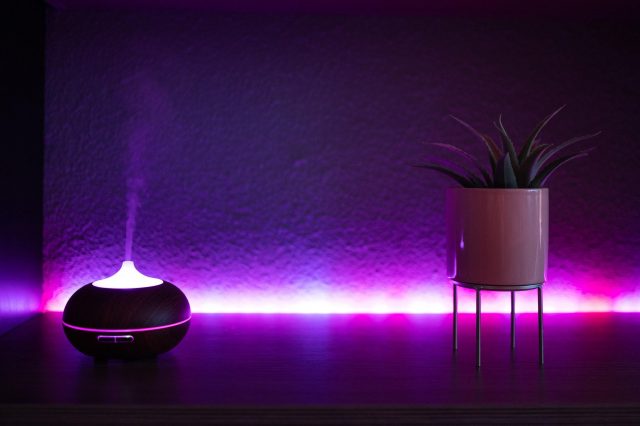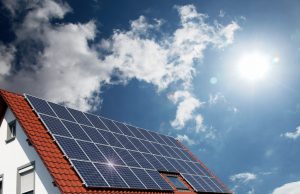
Are you tired of dealing with the constant flickering and health hazards of fluorescent lighting? Did you know that LED lighting is up to 80% more energy-efficient than traditional fluorescent lights? It’s time to make the crucial shift to LED for a sustainable tomorrow.
In this article, you’ll explore the issues associated with fluorescent lights and discover the numerous advantages of LED lighting. From improved product longevity and energy consumption efficiency to environmental benefits, LED lighting offers a compelling case for making the switch.
Say goodbye to flickering lights and hello to a brighter, more sustainable future with LED lighting.
The Environmental Impact of Fluorescent Lighting
If you have ever used fluorescent lighting, you may not realize the significant environmental impact it can have. Fluorescent lights pose health hazards such as flickering concerns, which can lead to headaches and eye strain, affecting your well-being.
Moreover, these lights contain mercury, contributing to mercury toxicity in the environment. Proper recycling methods for fluorescent lamps are crucial to avoid exposing toxic chemicals and to ensure environmental sustainability.
However, LED lighting offers a solution. LED lights are mercury-free, don’t flicker, and are easily recyclable, making them a safer and more environmentally sustainable lighting option.
Switching to LED lighting benefits your health and reduces the environmental impact, making it a crucial step towards a sustainable future.
The Advantages of LED Lighting
Experience the numerous advantages of LED lighting by switching from fluorescent to LED lighting.
LED lighting offers customization options, allowing you to choose the ideal colour temperature to create a specific ambience in any space.
LED lighting provides health benefits by eliminating flickering and noise, reducing the risk of headaches and eye strain associated with fluorescent lighting.
LED lighting consumes 75% less energy than traditional fluorescent lighting, reducing energy costs and environmental impact.
LED lighting has a longer lifespan and reduced need for frequent bulb replacements, ultimately decreasing maintenance costs and time spent on replacements.
Make the smart choice for your well-being and the environment by embracing the numerous advantages of LED lighting.
Energy Efficiency: LED Vs. Fluorescent
Compare the energy efficiency of LED and fluorescent lighting to understand the significant advantages of switching to LED for a sustainable and cost-effective lighting solution.
LED lighting consumes 75% less energy than traditional fluorescent lighting, resulting in substantial energy savings. LED bulbs last up to 25 times longer than fluorescent bulbs, reducing maintenance costs and the need for frequent replacements. This increased longevity and efficiency contribute to cost-effectiveness and reduce the environmental impact.
LED lighting offers higher quality illumination, with customization options for colour temperature, creating a specific ambience. Additionally, the health benefits of LED lighting include reduced eye strain and headaches due to the absence of flickering.
Switching to LED lighting saves energy and costs, enhances lighting quality, and promotes well-being.
Longevity and Durability of LED Lights
Highlighting the extended lifespan and robust construction of LED lights, you benefit from reduced maintenance and replacement needs, contributing to long-term cost savings and environmental sustainability.
LED lights offer maintenance savings due to their longer lifespan and contribute to increased productivity by eliminating the distraction of flickering or noise.
Furthermore, LED lighting provides a customizable ambience, allowing you to tailor the lighting to specific needs or preferences.
With instant and noise-free lighting, there are no delays or disturbances, promoting a conducive environment for work or relaxation.
Additionally, the absence of hazardous substances like mercury in LED lights reduces health hazards, ensuring a safer and healthier lighting option for indoor and outdoor spaces.
Making the Switch: Transitioning to LED Lighting
How can you smoothly transition your lighting system to LED while maximizing energy efficiency and minimizing maintenance costs?
Start by considering cost savings. LED lighting’s energy efficiency can significantly reduce electricity expenses, and its longevity lowers maintenance costs.
Explore retrofitting options to seamlessly upgrade your current fixtures to LED, minimizing installation time and expenses.
Enjoy lighting customization with LED, allowing you to tailor colour temperature and ambience to suit your needs. Additionally, LED lighting provides safety benefits, such as reduced flickering and instant-on capabilities, promoting a comfortable and productive environment.
Lastly, take advantage of government incentives for transitioning to LED lighting, which can offset initial costs and enhance overall cost savings.
Using a reputable company like OTB Electrical Contractors can help you feel confident in your switch to LED lighting.
Frequently Asked Questions
What Are the Potential Health Hazards Associated With Flickering Fluorescent Lights That Are Not Addressed in the Article?
Flickering fluorescent lights can lead to potential hazards like eye strain and other health effects. The flicker frequency can cause headaches and affect workplace safety. It’s essential to address these issues when considering lighting options.
How Do LED Lights Compare to Fluorescent Lights in Terms of Their Impact on Wildlife and Ecosystems?
LED lights have minimal impact on wildlife and ecosystems, supporting conservation efforts and biodiversity protection. Their low heat emission and absence of toxic substances contribute to environmental preservation and sustainability, making them eco-friendly lighting options.
Are There Any Regulations or Policies in Place Regarding the Disposal of Fluorescent Lights and Their Impact on the Environment?
Regulatory compliance for fluorescent light disposal aims to reduce environmental impact and health risks. Proper disposal methods are crucial to prevent harm to wildlife and ecosystems. Compliance with disposal regulations contributes to wildlife conservation and ecological preservation.
What Are the Economic Implications of Transitioning to LED Lighting for Businesses and Industries Beyond Just Energy Cost Savings?
Switching to LED lighting brings economic benefits like long-term savings, increased workplace productivity, and meeting market demand. It also has a positive environmental impact, reducing energy costs and creating opportunities for businesses and industries.
How Do LED Lights Contribute to Reducing Light Pollution, and What Are the Potential Benefits for Communities and Urban Areas?
When you switch to LED lights, you’re reducing glare and light pollution, benefiting community well-being and the urban environment. LED lighting offers sustainable solutions that minimize light pollution and create a more pleasant and sustainable urban environment.
Conclusion
Say goodbye to the flickering and health hazards of fluorescent lighting and switch to LED for a brighter, more sustainable future.
With its energy efficiency, longevity, and environmental benefits, LED lighting is the clear choice for a better tomorrow.
So, take the crucial step towards a more sustainable world by embracing the shift to LED lighting and enjoy the improved lighting experience it brings.













